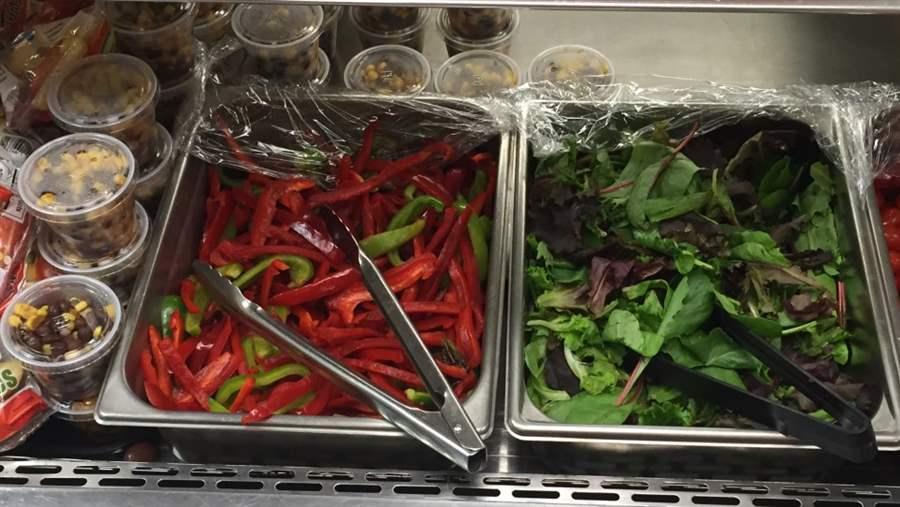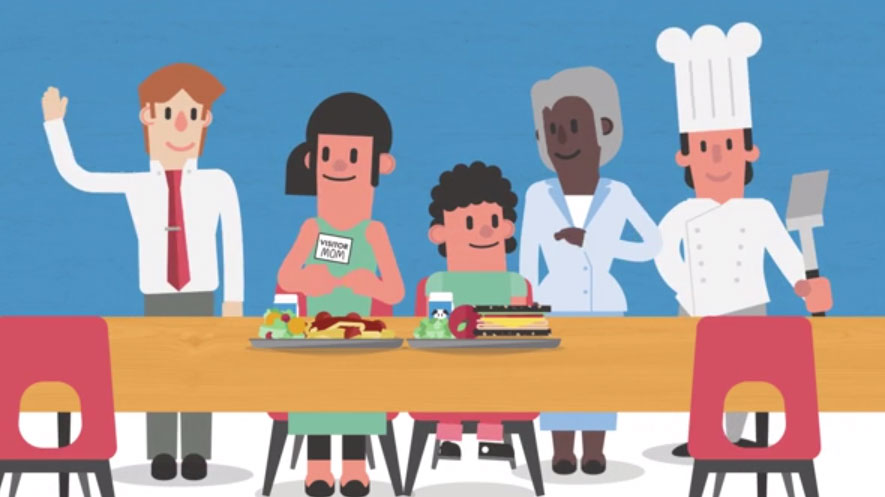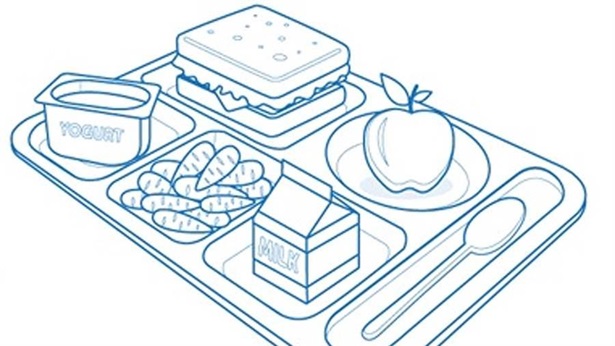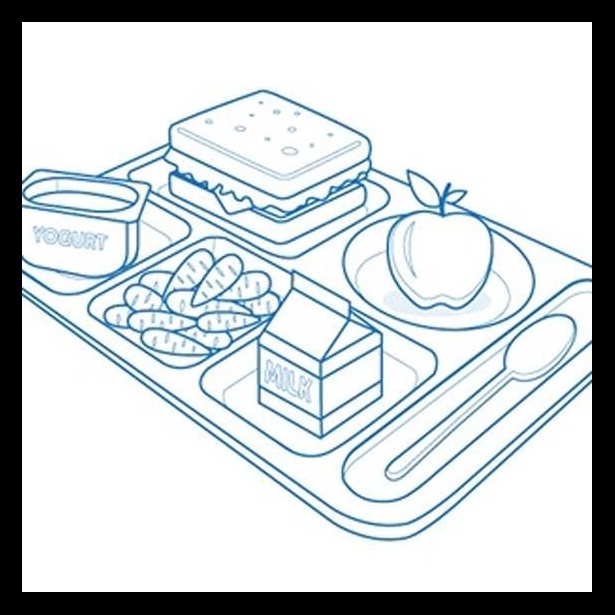National School Lunch Week
 Jessica Donze Black, The Pew Charitable Trusts
Jessica Donze Black, The Pew Charitable TrustsWhen was the last time that you stopped by the busiest, healthiest, and least-expensive restaurant in town? If you’ve joined your child for a school lunch recently, you have done exactly that!
To celebrate National School Lunch Week, I joined two of my children for meals at their elementary school. Although I am well-versed in the research that shows how far we’ve come as a nation on school nutrition in recent years, seeing the progress in the cafeteria environment firsthand was valuable, and I encourage other parents to do the same.
Here are a few lessons I learned in the lunchroom:
Kids do eat fruits and vegetables! On the day I joined my children, kids were scooping their own portions from a giant tub of red grapes. Some took about half a cup, while others took a cup or more. But at the end of the meal, almost all of those grapes had been eaten, as had other fruit and vegetable options, such as sliced red peppers and apples.
How food is served and how much time kids have for meals affect what they eat. I didn’t conduct a scientific analysis, but my observation was that whole fruits and crunchy vegetables, whether sent from home or purchased at the school, took kids longer to eat and were more likely to be left to the end or not eaten at all. A little more time to eat and a little more slicing and dicing could make a big difference in getting kids to eat healthy foods.
Equipment and infrastructure matter! My children’s school cafeteria, like many, relies largely on equipment and setup from long before updated nutrition standards went into effect. Children file through a typical lunch line to collect their food from a small hot serving area and a cold display and then pay the cashier. This lack of infrastructure limits the options the school can offer and the creativity with which they can promote and serve different menu choices. A little redesign and some modern displays could cut line time, increase eating time, and attract even more young people to the program.
Schools can’t go wrong when all options are healthful! Our school offers very limited and carefully selected a la carte options, a strategy that encourages students to pick full meals and helps ensure that the choices they make are healthy ones.
However, many students at our lunch table had brought meals from home that included sugary treats such as cookies or snack cakes. Although many kids didn’t finish their packed lunches, I noticed everyone finished their sweets. Given the limited time for lunch, ensuring that everything children have to eat will help keep them healthy and strong is even more important. That’s why the Smart Snacks in School nutrition standards—which cover a la carte menus, vending machines, and school stores—are such a critical complement to the healthy requirements for breakfasts and lunches.
I learn something every time I visit the cafeteria, and I think most parents would benefit from seeing how much progress has been made on school lunches. We know that about 3 in 4 parents support healthier nutrition standards, but only 1 in 3 have seen them in practice in the past year. There’s no time like the present to get into the school cafe, see for yourself how things are going, and work with your school’s nutrition program to learn about and help overcome any challenges they are facing.
Jessica Donze Black directs the Kids’ Safe and Healthful Foods project, a collaboration between the Robert Wood Johnson Foundation and The Pew Charitable Trusts.


This video is hosted by YouTube. In order to view it, you must consent to the use of “Marketing Cookies” by updating your preferences in the Cookie Settings link below. View on YouTube
This video is hosted by YouTube. In order to view it, you must consent to the use of “Marketing Cookies” by updating your preferences in the Cookie Settings link below. View on YouTube


Parents Want Healthy School Food
More than 30 million American children eat school lunches each day, and these meals are healthier than ever. See how school lunches have changed.
Watch the Video





